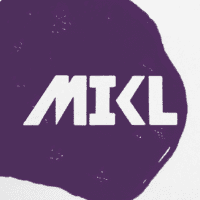The Rant: You Know, There Was Life Before CP&B
By / /
Volume 19 In a Series By Felix
Advertising has its iconic agencies. We praised the brave new world of Doyle Dane Bernbach; we marveled at the excesses of Saatchi & Saatchi; we wondered if anyone would come along to rival Deutsch. And now, it seems, everyone is worshiping at the Crispin Porter & Bogusky church.
Personally, I don’t put any of the latter agencies in the same league as the original DDB. Bernbach’s agency turned advertising on its head, making enormous leaps that revolutionized an industry. From the creation of art director/copywriter teams, to “selling a German car to Jews,” DDB’s work, and ethos, from the 50s, 60s and 70s is often copied to this day.
At this point, I hear mutterings of discontent. “It’s not fair to compare and contrast CP&B with DDB. Different time, different place.” But why not? If you’re going to put Crispin on this massive pedestal, they also deserve to be put under a microscope, too. It seems quite fair to look at what they have done, and are doing, and whether CP&B’s work will stand the test of time.
Has CP&B produced a campaign that’s on par with the original Volkswagen work? Has CP&B ever refused to work with a client until they fundamentally improved their business model, so that the advertising claims were completely genuine? Has CP&B created a revolution in advertising to rival DDB’s?
I hear people tell me all the time that CP&B is not just an ad agency, it’s a cultural phenomenon. And yes, I love their work. They do some great, great advertising and they usually embrace the Bernbach spirit of focusing on the product or service. But they’re not alone, and they’re certainly not new.
Take a British agency that, for a time, was THE agency everyone (including myself) wanted to work at. Not just that, but it was the agency clients mentioned in the board rooms of every other agency in the UK. “Why can’t you do something more edgy, like THEM?” I’m referring to Howell Henry Chaldecott Lury (HHCL), which launched over 20 years ago in 1987 – two weeks after the ’87 Wall Street Crash.
The founding partners of HHCL wanted to do a different kind of advertising (hardly surprising after the crash). More interested in selling the product than winning awards, they were constantly pushing boundaries and making consumers sit up and take notice. They were smart, savvy, intelligent, irreverent and could not be touched. They were advertising rock stars.
Their work was unorthodox and ultra-creative. They were visionaries, whose work on products like Tango, Maxell, the AA, First Direct and Pot Noodle earned them a place in British (and to an extent, International) advertising history.
HHCL was also responsible for many firsts, not dissimilar to those of DDB. The entire company, and the work they produced, organized itself around project teams: an account director, strategic planner and creative team were responsible for creating the work. This may be how it’s done today in many places, but not back in 1987.
The idea of complete integration is nothing new today either, but HHCL was at the front line of offering above and below the line advertising and PR.
Clients were invited to tissue sessions. And “hot desking” was employed, so that agency employees of different skills sat next to each other. It wasn’t unusual to have an accountant working opposite a copywriter and art director. HHCL produced its own in-house TV show, The Howell Henry Show. HHCL had a futurologist and a shaman on staff.
Want more? They were the first agency to run two ads concurrently on two different channels. They broke out of the mold, putting ads on everything from Tube tickets to pavements, and thus forging the way for the guerrilla work now commonplace in most agencies. They were the first to put a web address on a commercial. They created the infamous Mazda campaign, which asked viewers to record the ad and play it back in slo-mo (it bombed by the way). They did it all, and did a lot of it first.
I could go on, but you get the picture. And other agencies followed in their footsteps, including St. Luke’s and Mother (who would later win clients from HHCL).
Where are HHCL now? Gone. Like all young upstarts with revolutionary ideas, the bigger they became, the more big clients they acquired, and the more mainstream they were forced to become. They eventually became establishment figures, being bought out and merged a few times before WPP Group put the final nail in the coffin in 2007.
Compare this story to CP&B. How much of it sounds vaguely familiar? Astounding work on BMW Mini, VW’s Safe Happens, and the unforgettable Subservient Chicken. Upstarts of advertising. Creative rock stars. You name it, if CP&B have been called it, I guarantee HHCL were called the same thing 20 years ago. CP&B also seems to be their own PR machine. They want the press; they want all of the shiny awards; they want to publish books and TV shows; hell, they’ll probably have a record deal soon.
And yet, I already see the mountainous CP&B showing cracks in its armor, albeit tiny ones. Several of their recent “big” ideas were recycled, either from themselves or other work. The BK wallets idea was done by McDonald’s, and a few years ago, Carlsberg Lager dropped money all over the streets of London. The taste test continues to get the CP&B treatment, first with Whopper Virgins and now a similar execution for Domino’s. In fact, check out the annuals and take a look at work by KresselsKramer, Goodby or BBH. You’ll see striking similarities, even in the phrasing Bogusky uses to speak to the press. And I don’t know many people who were really impressed or swayed by the $300 million Microsoft work, which was schizophrenic and often self-indulgent.
Meanwhile, agencies like Fallon, Wieden & Kennedy, Goodby Silverstein, BBDO, DDB and others continue to pump out great work without feeling the need to be a rock-star agency with perfect hair and an obsession with being cool.
In the end, it’s all about “The Work. The Work. The Work.” And that didn’t come from Alex Bogusky by the way, but BBDO’s Phil Dusenberry.
There. I said it.
But I’ll still take a job at CP&B. I’m just mad…not insane.






Comments
stevehappens January 7, 2009
Meh.
Meh.
maurer January 7, 2009
My IMHO take.
Bernbach
My IMHO take.
Bernbach changed everything. I read his creative manifesto whenever I take a crap. I love it (the manifesto, I mean).
The Wieden era changed things again. Made it about the brand, not the product. Suddenly what a brand stood for mattered more than what it sold. But as inspiring as that work got, it always felt like it was on a pedestal.
Then Crispin took the art out of advertising and brought it to the people. Or at least that’s how it felt. Mini, Molson, Maxim, early BK, Truth, Virgin. Really nice work that literally played with the audience. And all of it made you think, Can they really do that?
And I think that’s what made it the third revolution — not the idea of integration, but the idea of fucking with reality. Like breaking the fourth wall.
Chris Lawson January 7, 2009
I think Felix is saying that
I think Felix is saying that HHCL started that revolution, not Crispin. HHCL loved fucking with the audience and breaking that wall. Crispin just get much more credit for it. I wish we’d all realize that there are agencies outside of this country.
Barry LaBov January 7, 2009
Great comments on the classic
Great comments on the classic ad shops—they were great and they changed everything.
CP+B is certainly the darling agency today. Most of the time, its their outrageous “shock “ creative that gets the attention but I think to their credit, if you look at the business strategy behind their wild creative, that it’s impressive.
They will continue to get attention for Whopper Virgins, but they will thrive because of their business smarts.
Tessa Stewart January 7, 2009
Um, Fallon (Minneapolis) is
Um, Fallon (Minneapolis) is in the toilet. Nothing good about the work in the last few years, lost client after client, and their staff has dwindled to the hundred+ range. I know a former employee who calls it “Fallen.”
I also know some employees and former employees of CP+B. An interesting bit of information about the creatives there is that they rarely view award show books, or talk about what other agencies are doing. They are always focused on their specific challenges, dreaming up things on their own. That may be the reason you see some familiar ideas previously from other agencies.
Also, I’m certain you haven’t ever met Alex Bogusky, by the way you judge him. He is nothing like you assume. He’s probably the most unpretentious and kind “advertising big shot” I’ve ever met. I’ve known small shop CDs with a single silver Pencil that have more of an ego.
paul suggett January 7, 2009
Which Fallon? The London
Which Fallon? The London branch is doing some stellar stuff, including the Cadbury’s drumming Gorilla spot. Like Chris said, think outside of the US for a second.
randall January 8, 2009
Yes, life before Crispin was
Yes, life before Crispin was called Goodby.
John January 8, 2009
As a former CP+B employee, I
As a former CP+B employee, I think the magic there is in their sheer audacity. They expect every employee – and every client – to make the impossible happen and sometimes it ends up brilliant. Sometimes it falls flat; but they just dust off, try to learn something and move on to the next hundred crazy ideas.